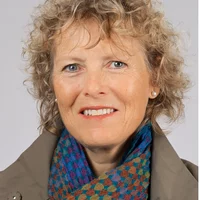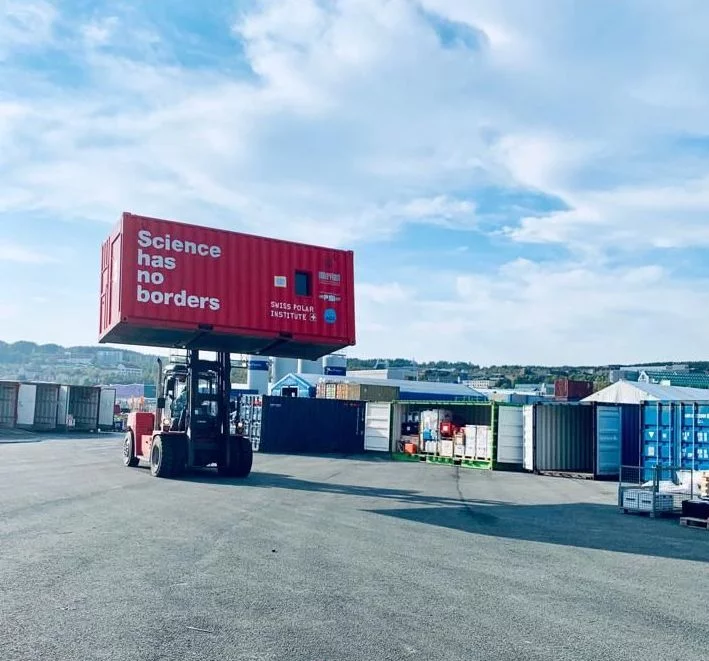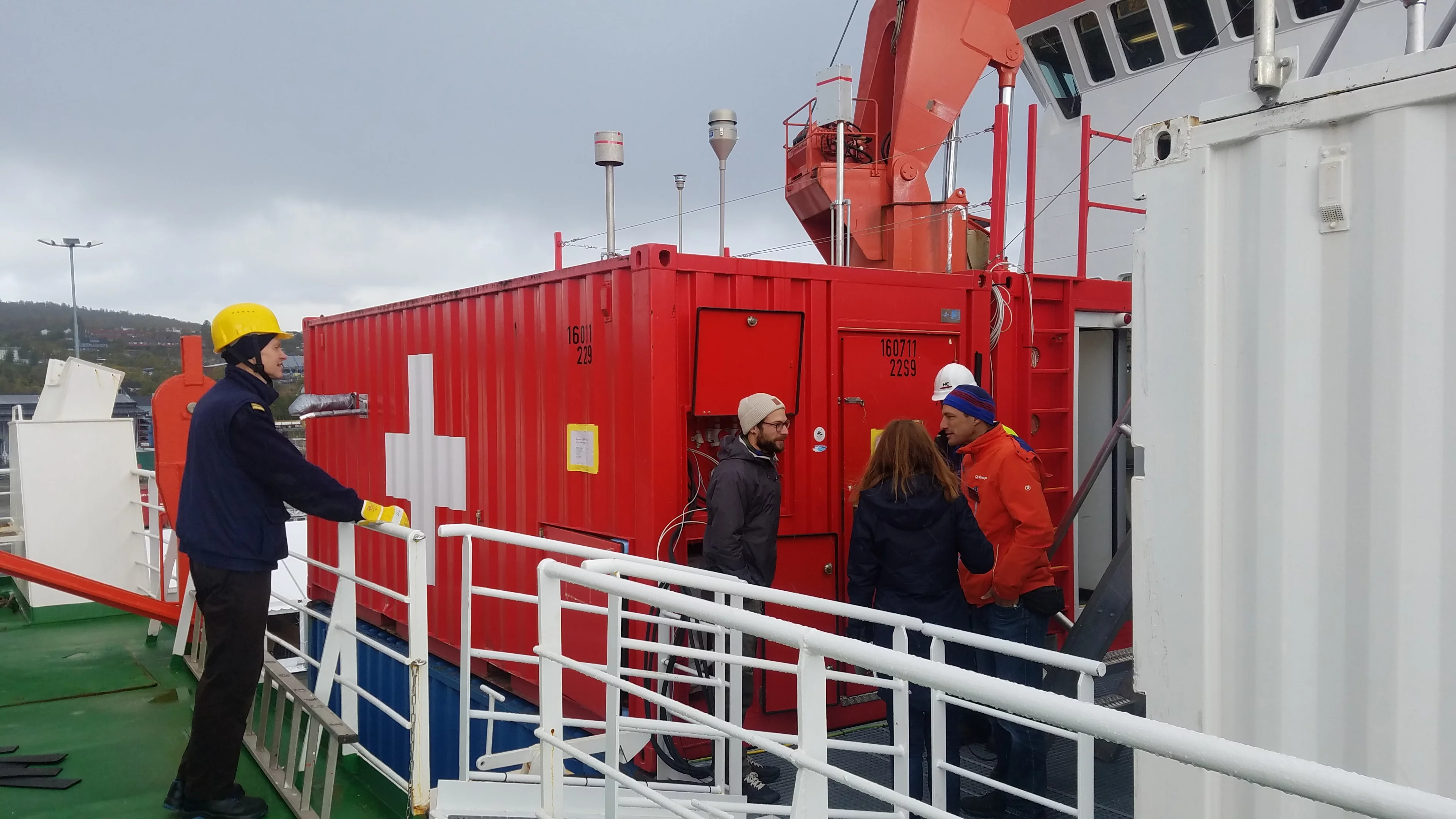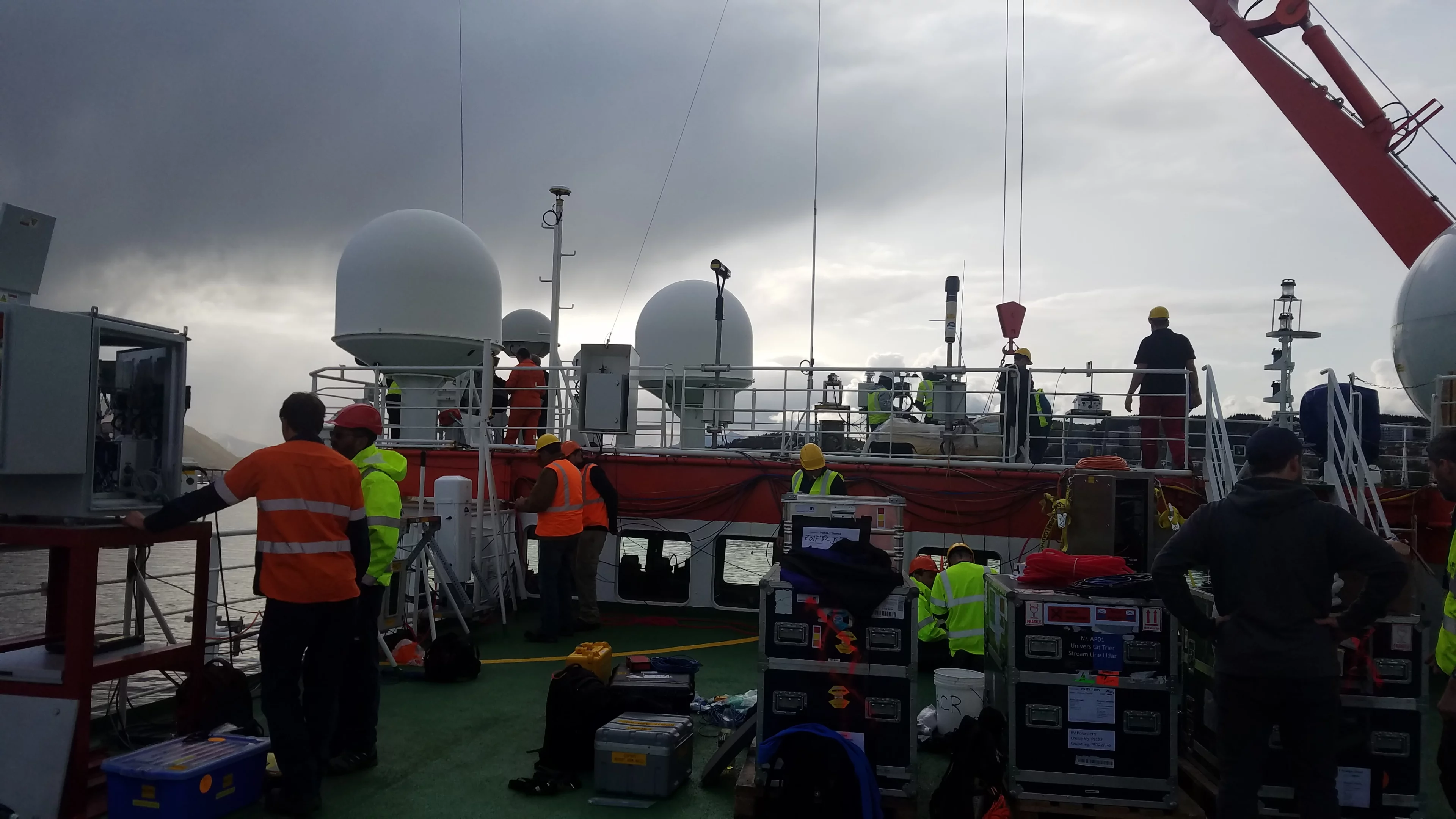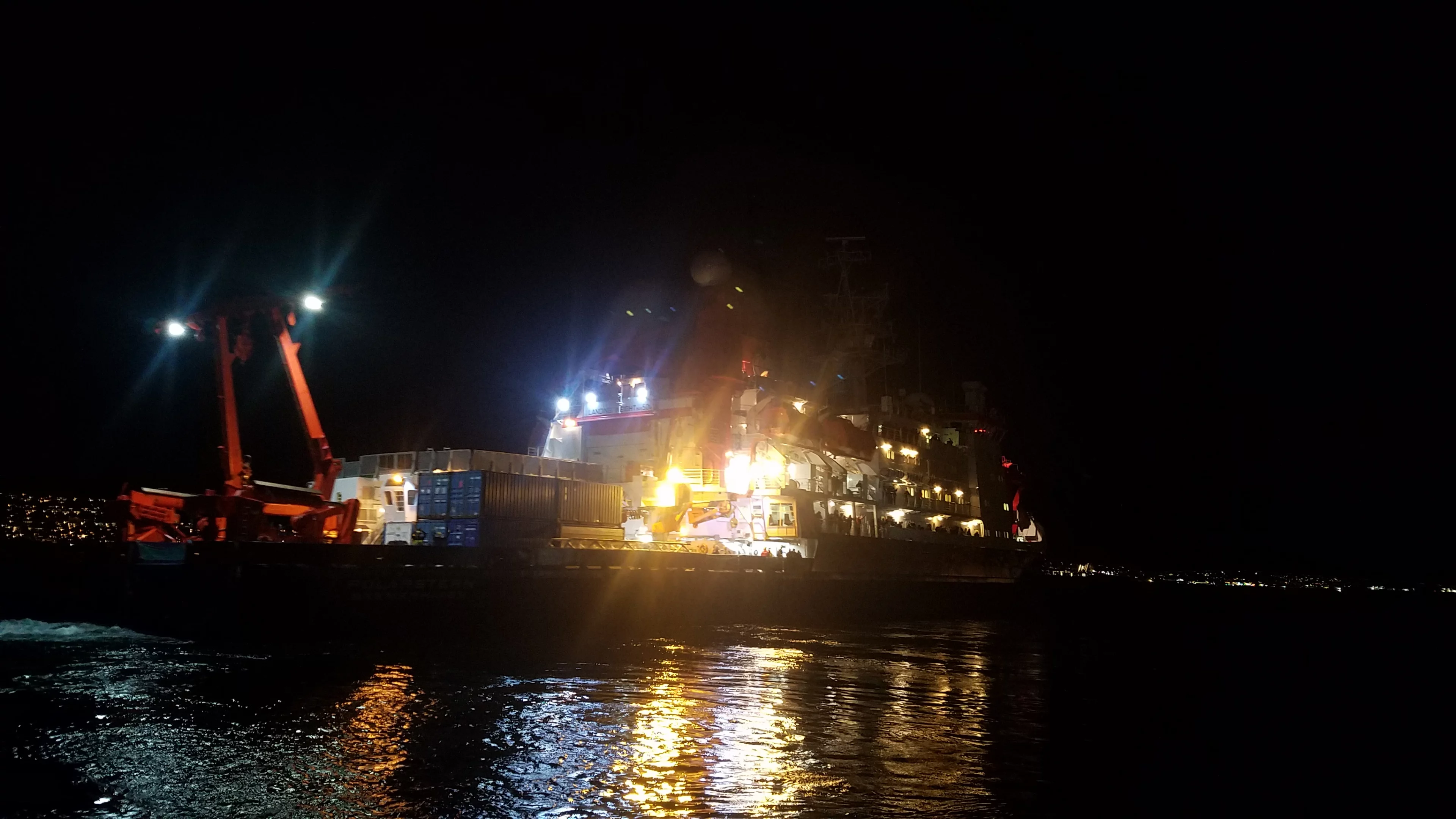Set-up and Farewell in Tromsö
“It’s happening, it’s real.”, the chief scientist, Markus Rex (AWI), can’t believe himself that the MOSAiC expedition is on its way now. On 20 September at 20h30 we bid farewell to Polarstern, our colleagues and the crew as they left port in Tromsö.
The past 10 days were intense. First, Lauriane (UHel, leg 1) and Ivo (PSI, leg 2) reshuffled some of our equipment, the spare parts, chemicals and accessories in the harbor. They also had the first look at our container after transport from PSI to Tromsö. What a relieve, all instruments were fine, nothing had moved.
Then a couple of days of waiting followed during which the crew loaded the ship. This is heavy crane work, where an incredible amount of containers and sling loads were heaved onto the ship. It’s best to stay out of the way. Now our laboratory container sits on the front deck in the first row.
On 18 September we finally had access to our deck. In the previous days, we had laid out a detailed plan with tasks to use the extremely short 48 hours to power up the container and have everything running for leg 1. Number one on the list was to get power, number two to install the inlets, number three power up all instruments, number four install a third mass spectrometer in the container next door … Now we were the full team with Tiia (UHel, leg 4), Tuija (UHel, leg 5), Zoe (UHel, leg 6), Julia (PSI, leg 3) and Heikki (UHel) to get our work done. In total, more than 160 scientists were on board to set up their equipment. Polarstern was buzzing like a beehive.
All went really well for us until the bow crane was brought into parking position. Despite very careful planning, the crane was now only 1 cm away from our interstitial inlet. The reason: some very recent modification on the crane that made it much wider. Leaving things like they were would basically have disabled our project. So a quick solution was needed. With great support from our lab back at PSI, we were able to shorten the inlet for a safe set up during transit. Once in the ice, the crane will be moved away.
This was probably only the first of a number of tough challenges that not only we, but the whole expedition, need to solve. It’s evident, the expedition will only be successful if the individual projects are successful. This will require everyone to be pragmatic and creative, and to work as a team. That solved, we now had less time on our hands to do the necessary calibrations and checks. So days were long, but with a motivated team we got everything done.
At 17h30 on 20 September, Lauriane had to board, “leaving Earth” as we joked. For us, bidding farewell, it was the moment to let go. Now it’s in the hands of those on board, and not to forget in the hands of the Arctic. Weather and ice can be unpredictable. We’re eagerly waiting for news from Lauriane and follow the movements of Polarstern closely on the app.

